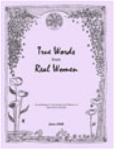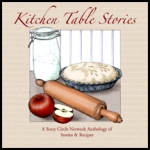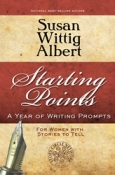
The full experience of a rose requires that we see with our minds the inner energy, the hidden origin, the radical form, and not simply the manifested colors, shapes, and proportions.
– Thomas Dubay
Let’s begin this month with a little experiment. Sit comfortably, back straight, feet on the ground. Allow your gaze to settle upon a single object right in front of you. This can be anything, your pen, the mug of tea you carried with you to your writing desk, the flower you picked this morning and placed in a vase upon your table, the tree outside your window, the rain dripping from your leaking gutter. Picking up your pen, describe exactly what you see.
When you have finished, put your pen down and sit comfortably again. Close your eyes. Take a few deep breaths, settling yourself into your body. Continue breathing slowly, gently, allowing your breath to breathe you into a space of stillness and quiet. Continue for however long it takes to let go of the world around you, to sink into the depths of your quietened mind, to become one with who you really are. When you feel fully rested and relaxed open your eyes and look again at the object. What do you see now, in the very moment when first you see it again? Can you try to describe what it is, what it looks like, not just its appearance, but its essence too. Try to see how its inner reality, its inner being, what Buddhists call its “suchness”, shimmering around the edges.
The purpose of this exercise is to encourage you as a writer to identify and understand the essential difference between writing as descriptive writing, and writing as mindful writing. There are not just worlds of difference between them, but universes, whole galaxies of intuited meaning, and not meaning as ‘truth’, but as spaciousness, vast landscapes, the vision or seeing of which can only be grasped by the inner eye, the quietened mind, the ‘weaned soul’.
Learning to see how things really are, not just from a superficial glance, but what they are beneath the surface of their appearance, takes time and practice to cultivate. Still you may be wondering, how do we capture this experience of the ineffable, that which we intuit as present but cannot find the words to describe? How often have we pulled back our curtains, still sleepy and warm from our night time dreams, only to be stunned into wakefulness by the beauty of an early morning sunrise? How do we even attempt to capture that immediate sense of shocked wonder, the sharp intake of our breaths as we are jolted awake and aware by the vision of beauty which we almost missed, and would have if we had lain on a few minutes more? Yes, we can describe the physical contours of what we see, but can we catch in words the way we felt when first we were surprised by this superfluous gift from the skies above?
Our presence to the moment means something; we feel it in our bones, in our guts, that this vision is more than a random array of colours brushed across a pale grey and icy blue canvas. We may feel a vague sense of frustration as we succumb to the silent muteness which accompanies some of our almost ‘religious’ experiences of the ineffable, what Nina Wise calls “the realm of sensed reality that refuses to be reduced to words.” [‘a big new free happy unusual life’]
Return to your writing desk and look again at the thing-as-it-is-in-itself. Breathe deeply into the present moment and take this thing-in-itself into the depths of your own being, until you reach a point where it and you are no longer subject and object, but all of a-piece, something single, unified, one. Peter Levitt in his marvellous book Fingerpainting on the Moon tells us that “the Sanskrit language came into being when the essence of each thing first made its sound known to human beings. When people heard these primordial soundings they realized they were witnessing the self-naming of the physical world, and so the sound each thing made became the word by which it was known.” The tree whispers to us that its name is “Tree”, by which it means “I am This.” And the stone tells us that its name is “Stone” meaning too that “I am This.” And so we listen to everything and we catch the whispers of the world as it tells us, one thing at a time, that it is This, that this is its name, its essence. And then, because we are writers, but most especially mindful writers, we pause long enough to look, listen and hear what the thing-in-itself is telling us, and we write it all down.
Mind, Give Me
Mind, give me
the exact name of things!
…that my word may be
the thing itself,
re-created by my soul.
So that all who do not know them
go through me
to things;
all who have forgotten
go through me
to things;
all those who love them
go through me
to things…..
Mind, give me
the exact name, and yours
and theirs and mine, of things!
-Juan Raón Jiménez
–Edith Ó Nualláin lives with her family in a small village on the east coast of Ireland, snuggled between the mountains and the sea, where she reads, writes occasional reviews, and spins exotic fibres into yarn. Some day she hopes to learn how to spin straw into gold.





